برای مشاهده قیمت و خرید کتاب ترجمه متون ادبی 1 (Translating literary texts 1) کتایون افضلی انتشارات پیام نور با کتابسرای افشین همراه باشید.
کتاب ترجمه متون ادبی 1 کتایون افضلی (پیام نور)
اطلاعاتی درباره کتاب
هدف
The aim of the current book is to introduce the challenges that translators may face while translating predominant genres of literature, i.e. poems, fictions and dramas, and to suggest some common strategies used to deal with the problems of translating each genre. At the end of each unit, some relevant translation tasks have been provided for students to let them put what they have learnt in theory into practice. The objective of developing the current book is to adopt new approach to teaching translation which is descriptive rather than prescriptive. The attempt was also made to use the contribution of stylistic analysis to translating! literary texts.
سرفصل ها
To meet these objectives, the book opens with an introductory chapter regarding the distinguishing features of literary and non-literary texts and the functions of the texts in order to provide the students with a general overview of the distinctive features of literary texts. Chapters 2, 3 and 4 will expose the students to the problems of translating poems: metaphors, synecdoche, metonymy, allusions and alliterations, and will suggest some common strategies used to deal with them.
Units 5. 6,7,8,9 and 10 will be designated to the problems of translating fictions. These units are concerned with issues such as style variation and reregistration, translating culture- bound words, important issues in translating dialogues in fictions and translating ironic expressions. It is noteworthy that some issues of translating fictions and dramas such as socio-cultural relationship between characters, translating their titles and dialogues overlap; therefore, these issues were dealt with just in the section related to translating fictions. Units 11 and 12 will be concerned with issues related to translating dramas. To this end, first two pragmatic approaches, i.e. Politeness Theory and Conversation Analysis will be introduced to analyze the socio-cultural relationship between characters, and then their contribution to translating dramas will be explained.
ساختار کتاب
In designing the present book, caution was exercised to use the most recent theories and references in the remit of translating literary texts. To this end, the final chapter of the book was dedicated to the current approach to translating literary texts which is ‘ideological and manipulative approach. Throughout the development of the discipline of Translation Studies, there has been various paradigm shifts and scholars of the field so far has had different concepts and definitions for ‘equivalence:’ Equivalence at word level, sentence level, text and discourse level. However, with the emergence of cultural and ideological turn in Translation studies, the focus has shifted from textual to extra textual and ideological aspects of the texts.
Accordingly, the task of the translator and the meaning of ‘faithfulness’ has also changed. Translators are supposed to wrestle with different factors while translating: textual, cultural and social ones. The following example can shed some light on the issue. For instance, a translator who is translating a short story whose audience is children and faces a vulgar word, is supposed to take cultural and ethical issues into consideration in applying translation strategies. In order to elaborate on this issue, the final chapter of the book will provide the reader with some manipulative strategies that American translator, Pau! Sprachman, applied in translating Tran’s war literature (Sacred Defense literature). Taken together, the book, intends to familiarize students with the most recent paradigm shifts in Translation studies using domesticated examples in a readerfriendly fashion.
برای خرید کتاب ترجمه متون ادبی 1 کتایون افضلی (پیام نور)
هم اکنون این محصول را به سبد خرید خود اضافه نمایید

کتاب ترجمه متون ادبی 1 کتایون افضلی انتشارات پیام نور

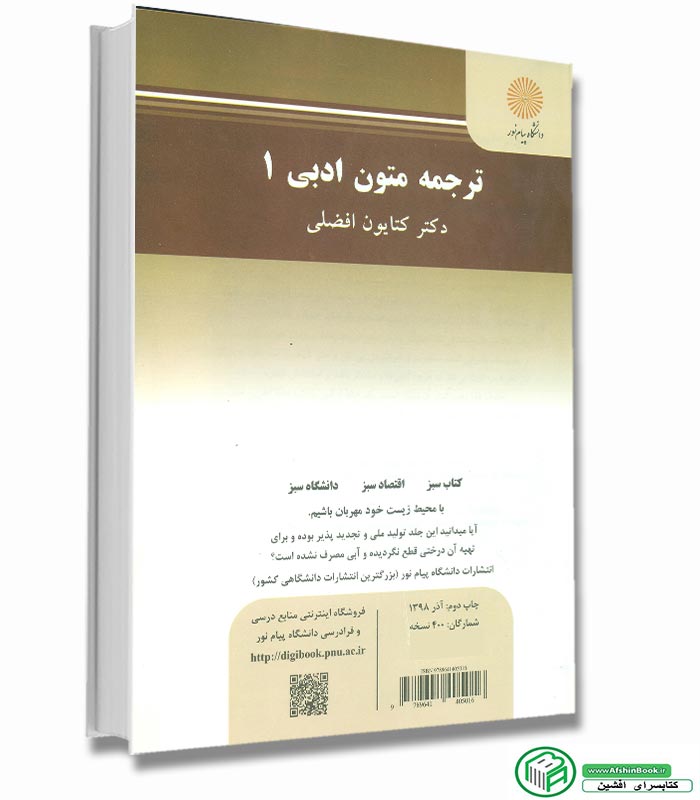
 پشتیبانی 24 ساعته
پشتیبانی 24 ساعته ضمانت اصالت کالا
ضمانت اصالت کالا ارسال سریع کالا
ارسال سریع کالا پرداخت آنلاین امن
پرداخت آنلاین امن
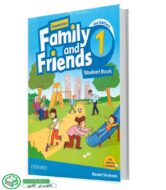

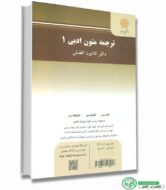
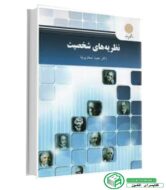



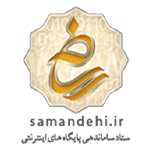



هیچ دیدگاهی برای این محصول نوشته نشده است.